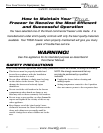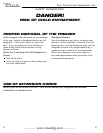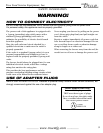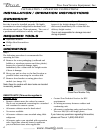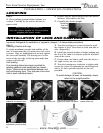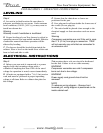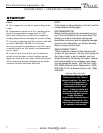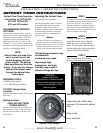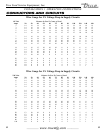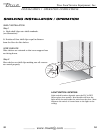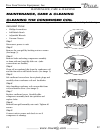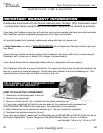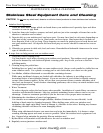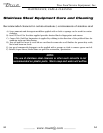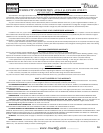
............ www.truemfg.com ............
............ www.truemfg.com ............
True Food Service Equipment, Inc.
True Food Service Equipment, Inc.
13
13
13
13
MAINTENANCE, CARE & CLEANING
MAINTENANCE, CARE & CLEANING
CAUTION: Do not use any steel wool, abrasive or chlorine based products to clean stainless steel surfaces.
Stainless Steel Opponents
There are three basic things which can break down your stainless steel’s passivity layer and allow
corrosion to rear its ugly head.
1) Scratches from wire brushes, scrapers, and steel pads are just a few examples of items that can be
abrasive to stainless steel’s surface.
2) Deposits left on your stainless steel can leave spots. You may have hard or soft water depending on
what part of the country you live in. Hard water can leave spots. Hard water that is heated can
leave deposits if left to sit too long. These deposits can cause the passive layer to break down and
rust your stainless steel. All deposits left from food prep or service should be removed as soon as
possible.
3) Chlorides are present in table salt, food, and water. Household and industrial cleaners are the worst
type of chlorides to use.
8 steps that can help prevent rust on stainless steel:
1. Using the correct cleaning tools
Use non-abrasive tools when cleaning your stainless steel products. The stainless steel’s passive layer
will not be harmed by soft cloths and plastic scouring pads. Step 2 tells you how to find the
polishing marks.
2. Cleaning along the polish lines
Polishing lines or “grain” are visible on some stainless steels. Always scrub parallel to visible lines on
some stainless steels. Use a plastic scouring pad or soft cloth when you cannot see the grain.
3. Use alkaline, alkaline chlorinated or non-chloride containing cleaners
While many traditional cleaners are loaded with chlorides, the industry is providing an ever
increasing choice of non-chloride cleaners. If you are not sure of your cleaner’s chloride content
contact your cleaner supplier. If they tell you that your present cleaner contains chlorides, ask if
they have an alternative. Avoid cleaners containing quaternary salts as they can attack stainless steel,
causing pitting and rusting.
4. Water Treatment
To reduce deposits, soften the hard water when possible. Installation of certain filters can remove
corrosive and distasteful elements. Salts in a properly maintained water softener can be to your
advantage. Contact a treatment specialist if you are not sure of the proper water treatment.
5. Maintaining the cleanliness of your food equipment
Use cleaners at recommended strength (alkaline, alkaline chlorinated or non-chloride). Avoid
build-up of hard stains by cleaning frequently. When boiling water with your stainless steel
equipment, the single most likely cause of damage is chlorides in the water. Heating any cleaners
containing chlorides will have the same damaging effects.
6. Rinse
When using chlorinated cleaners you must rinse and wipe dry immediately. It is better to wipe
standing cleaning agents and water as soon as possible. Allow the stainless steel equipment to air
dry. Oxygen helps maintain the passivity film on stainless steel.
7. Hydrochloric acid (muriatic acid) should never be used on stainless steel
8. Regularly restore/passivate stainless steel
Stainless Steel Equipment Care and Cleaning




